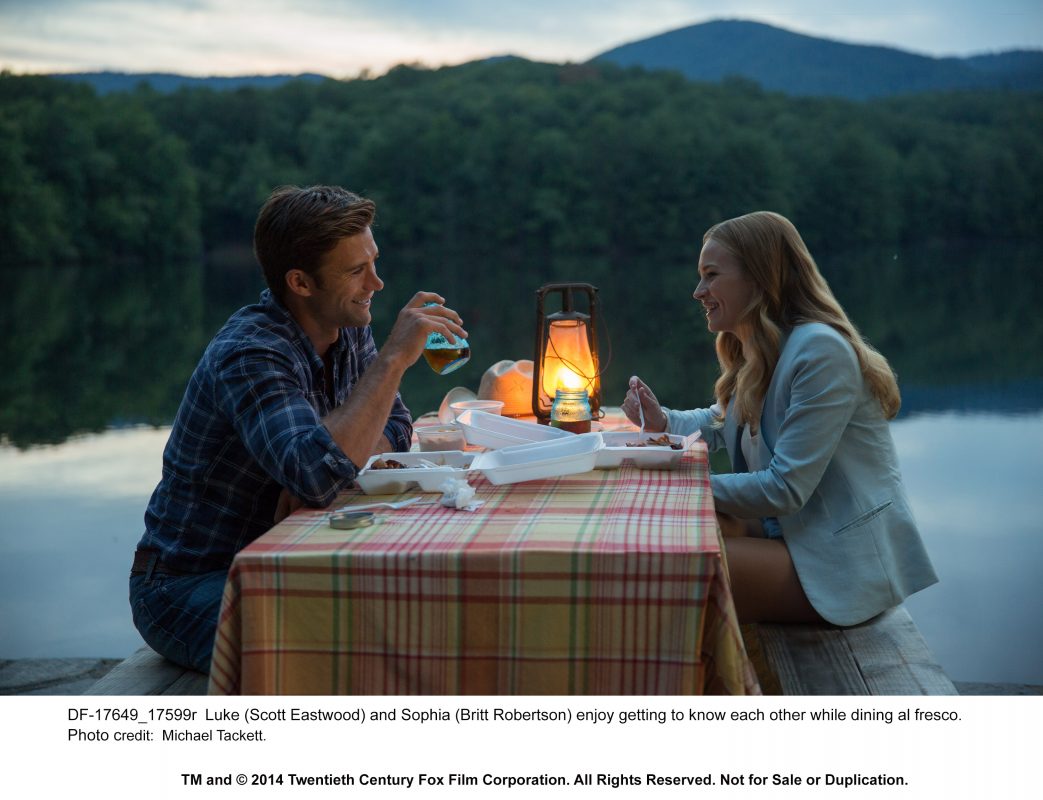
You could call Nicholas Sparks the M Night Shyamalan of romance films. After a few false starts, Sparks first truly captured the nation’s collective romantic imagination with an adaptation of his novel The Notebook, which was actually pretty great, as such things go. It had a wildly charismatic, becapped young Ryan Gosling, and it made him a big star. It had that impossibly romantic kiss in the rain. It had the wonderful parallel structure, featuring two canny old actors (Gena Rowlands and James Garner) who were so talented, we didn’t even care that they looked nothing like their younger counterparts. It even managed to perpetuate my favorite James Marsden meme—that he’s unlucky in love.
In my Shyamalan analogy, The Notebook is Sparks’ The Sixth Sense, of course. But then, much like Shyamalan’s parade of lame Twilight Zone knockoffs with surprise endings, we started to see more of Sparks’ work on screen—Dear John, The Last Song, Safe Haven—and it became clear he was something of a one trick pony: Beautiful people falling in love, often in a coastal town, with some central conflict or tragedy that keeps them apart—all en route to a four-hanky resolution. Sometimes, when Sparks is feeling particularly frisky, he dusts off the old “parallel structure” formula, as he does in The Best of Me (where—bonus!—James Marsden is finally deemed hot enough to actually get the girl.)
But the formula gets old fast. It doesn’t help that, when you get right down to it, Sparks isn’t even particularly great at the very thing he’s famous for: romance. In most of his films, a frolic on the beach, a kiss under a shower or waterfall, a spontaneous “race ya!” across a field, is a shorthand for falling in love.
In his latest, another parallel structure extravaganza called The Longest Ride, our heroine Sophia (Britt Robertson), a sorority girl at Wake Forest, gets dragged to the rodeo by her boy-crazy roommate. There, hunky bull rider Luke (Scott Eastwood, Clint’s kid) flees from a charging bull and his hat flies into the crowd. Sophia catches it; he tells her to keep it. Later, they flirt at a bar and go on a date. They like each other but there’s a problem: She’s graduating in two months and moving to Manhattan to intern at a gallery; he’s all about that South Carolina ranch life. Driving home sadly from their first date—they’ve already realized that being together would be impractical—they come across a smoking car in a ditch, and Luke bravely rescues the old man trapped inside (Alan Alda). “My box,” the old man, whose name is Ira Levinson, manages to choke out. And damned if there isn’t a little wicker box filled with hundreds of hand-written letters in the back seat.
Okay, now we must discuss those letters, because they’re rather central to the plot. While waiting for Ira in the hospital lounge, Sophia (nosily) pulls out one of the letters and begins to read. With Alan Alda’s voice providing narration, we are treated to a flashback where young Ira (Jack Huston) falls for dreamy art lover Ruth (Oona Chaplin), a recent immigrant from war-torn Austria. What are the odds, I grumbled to myself, that the one letter Sophia pulls out happens to be written in narrative form, describing Ira and Ruth’s burgeoning courtship?
Turns out the odds were quite high: Because these aren’t letters at all, at least not in any conventional (or even unconventional) sense. They’re Ira’s autobiography, in letter form, sent daily to Ruth. Run for your life, Ruth! Your beau’s a raging narcissist.
So anyway, off we go: Back and forth, from Luke and Sophia, unable to stay away from each other despite their differences; to flashbacks of Ira romancing and later marrying Ruth, as the specter of U.S. involvement in WWII looms. Each romance contains a deep, dark secret (in Sparksville, they always do) and, in both cases, fine art plays a significant role. Lolita Davidovich is on hand as Luke’s sexy mother, who just seems to hang out all day on the ranch, all glammed up with no place to go.
Okay, the question you all want answered—how’s Clint’s kid? (I suspect that curiosity about this will actually drive some of the film’s b.o.). Not horrible! I mean, he’s super hunky, of course, like a slightly less squinty, decidedly more jacked up version of his own dear old dad. And he seems to have this…golden glow? (Okay, maybe that’s just cinematographer David Tattersall’s trickery). As an actor, his face manages to display a reasonable range of emotions—determination on that bull; rakish flirtatiousness with Sophia; an “I want to have sex” face when he, uh, wants to have sex. He’s earned a second movie. (For her part, Robertson is a natural and likeable presence, although I believed that she was the high school “weird kid”—and the child of Polish immigrants, no less—about as much as I believed that people write daily autobiographical letters to people they live with.)
It all ends, improbably enough, at an art auction, at which point Luke makes a sweeping romantic gesture that makes no sense whatsoever in the context of the story. But there’s something else about Nicholas Sparks’ work—it’s highly conservative. So given the choice, even if it’s narratively illogical, the handsome boy in the cowboy hat will always save the day.
